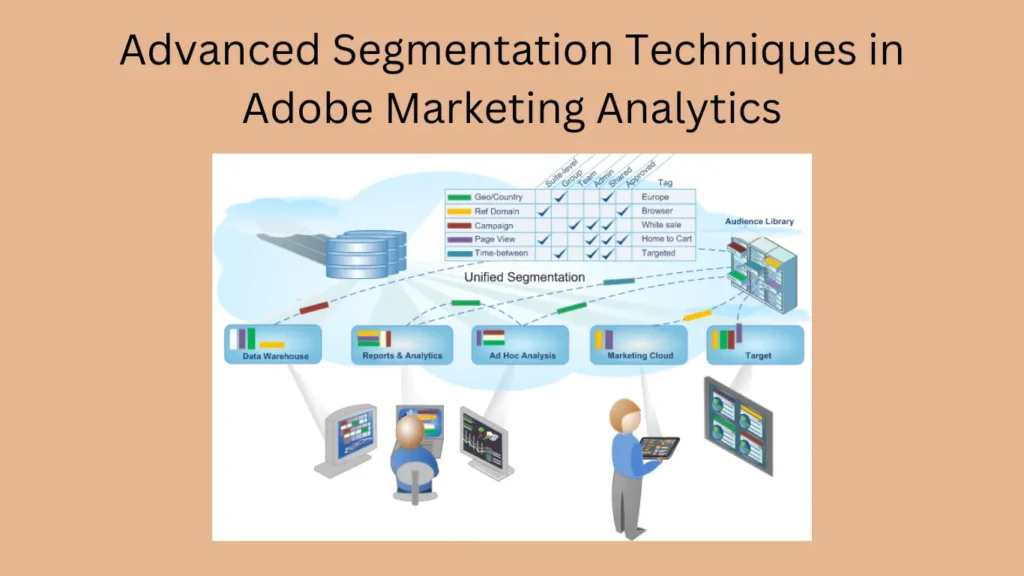Adobe Marketing Analytics offers powerful tools for analyzing and optimizing marketing campaigns. Advanced segmentation techniques allow marketers to refine their targeting, improve campaign performance, and enhance overall marketing strategies. This guide explores advanced segmentation techniques in Adobe Marketing Analytics with a focus on creating helpful, reliable, people-first content.
1. Understanding Segmentation in Adobe Marketing Analytics
Segmentation Basics
- Definition: Segmentation divides your audience into specific groups based on shared characteristics or behaviors.
- Benefits: Helps tailor marketing efforts, improve personalization, and enhance customer engagement.
2. Utilizing Advanced Segmentation Features
Custom Variables
- Creation: Define custom variables based on unique business needs (e.g., customer lifetime value, purchase frequency).
- Application: Segment audiences using custom variables to target high-value customers or frequent purchasers.
3. Behavioral Segmentation
Behavior-Based Criteria
- Event Tracking: Track specific user actions (e.g., clicks, downloads) and segment users based on their interactions.
- Conversion Paths: Analyze conversion paths to identify common behaviors leading to conversions and optimize marketing funnels.
4. Demographic and Psychographic Segmentation
Audience Attributes
- Demographics: Segment by age, gender, income, etc., using Adobe’s data integration capabilities.
- Psychographics: Analyze user interests, preferences, and behaviors to create more targeted marketing personas.
5. Geographical Segmentation
Location-Based Targeting
- Geographic Data: Utilize location data to segment audiences by region, city, or country.
- Localized Campaigns: Tailor marketing messages and offers based on geographical insights to improve relevance and effectiveness.
6. Advanced Analytics and Reporting
Data Visualization
- Dashboard Customization: Create customized dashboards to visualize segmented data and track key metrics.
- Performance Analysis: Evaluate campaign performance across different segments to identify trends and opportunities for optimization.
7. Integration with Other Adobe Tools
Cross-Platform Insights
- Adobe Experience Cloud Integration: Combine data from Adobe Marketing Analytics with Adobe Campaign, Adobe Audience Manager, etc., for comprehensive insights.
- Unified Customer View: Build a unified view of customers across channels to deliver consistent experiences and improve targeting accuracy.
8. Optimizing Marketing Strategies
Iterative Improvement
- A/B Testing: Test different segmentation strategies and campaign variations to identify what resonates best with your audience.
- Continuous Refinement: Use insights from advanced segmentation to refine targeting, messaging, and offers in real-time.
Conclusion
Advanced segmentation techniques in Adobe Marketing Analytics empower marketers to delve deeper into audience insights, optimize targeting strategies, and improve overall campaign effectiveness. By leveraging custom variables, behavioral data, demographics, and geographic insights, marketers can create more personalized experiences that drive engagement and conversions. Remember, creating helpful, reliable, people-first content ensures you maximize the value of Adobe Marketing Analytics for your marketing efforts.
For further Inquires Contact Us
FAQs
What are segmentation techniques in Adobe Marketing Analytics?
Segmentation techniques in Adobe Marketing Analytics involve dividing audiences based on criteria like demographics, behaviors, and interests to enhance marketing precision.
How can custom variables be used in Adobe Marketing Analytics?
Custom variables allow marketers to define specific parameters (e.g., customer lifetime value, purchase frequency) for segmenting audiences, enabling targeted marketing efforts.
Why is behavioral segmentation important in marketing analytics?
Behavioral segmentation helps marketers understand user actions and preferences, enabling tailored marketing strategies that resonate with specific customer behaviors.
How does geographical segmentation benefit marketing campaigns?
Geographical segmentation uses location data to target audiences by region, city, or country, optimizing campaigns with localized content and offers for better engagement.
What role does advanced analytics play in Adobe Marketing Analytics?
Advanced analytics in Adobe Marketing Analytics provide insights into campaign performance across segmented audiences, guiding strategic decisions for improved ROI and effectiveness.

